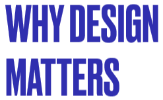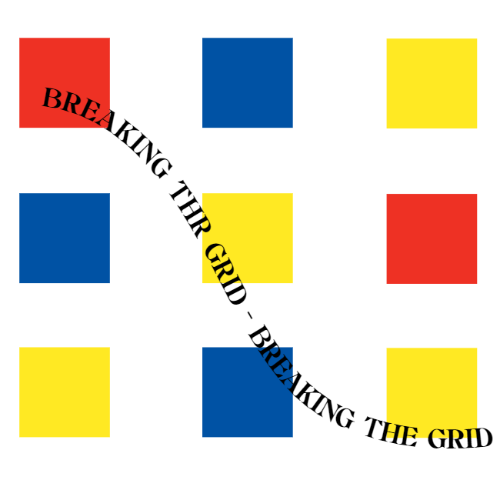IE School of Architecture & Design Newsletter - February 2021 |
|
| |
|
|
| | | time to focus on | 
| To explain why design is important to us all, I could start by pointing out the important connection between design, innovation, and progress. I could comment on how we can trace the history of design back to “the Great Leap Forward” 50.000 years ago when humans began designing arrowheads of different shapes and sizes, and have been designing ever since. This process shaped our tangible world, but also our intangible one, by shaping our behavior. The design of objects and systems heavily influenced our perception of the world and our own personal evolution. We design tools and, in return, they design us. Design has been a driver of many leaps forward throughout human history and its subtle but steady presence has seeped into many fields beyond the strict confines of the discipline. For example, one could point out the consequences of the design of the first mass-produced car. How, on the one hand, it gave us mobility freedom and how, on the other, that same technology influenced the Art Deco movement, and triggered a beautiful tennis match between technology and aesthetics. This symbiotic relationship between technology and culture at that time produced some of the most stunning automobiles and, at the same time, some of the most iconic graphic designs and dynamic interiors. Our environment educates and elevates us, and it has been proven that our state of mind is influenced by our surroundings. Not only design matters but good design matters. Ruxandra Iancu Professor in the IE Bachelor in Design |
|
| | |
|
|
| | | | | 
| Breaking the Grid: Design Annual Journal Vol.2 Developed by the first and second-year Bachelor in Design students Creativity is often understood to be intrinsically linked to the breaking of the norms and aesthetic systems that constitute the canons of artistic practices. Yet, can creativity still be understood that way in a world where breaking the norm seems to have become the norm? What traditional patterns are there left to break with, after so many years of iconoclasm? Breaking the Grid, the second issue of the Bachelor in Design’s annual journal brings together a selection of the best essays written by the first and second-year students of the Bachelor in Design. The content, coordinated by professors Clara Zarza and Carmen Van Bruggen, brings together words and form. Students critically reflect on how creating a grid is a much needed first step when creating norms before one can break them. | |
|
| | 
| Designing a Lean Workspace for the Future Elvira Muñoz, Director of the Master in Strategic Design of Interior Design Are you aware of how your behavior is impacted by your physical surroundings? There is a close relationship between the two. We have heard of the consumer experience and the user experience, and how the customer journey is designed, but how about the spaces that go along with this experience? Many of the impacts of COVID-19 and the restrictions on our daily routines has made us long for a return to our workplaces. However, the design of interior environments should adapt to our new reality. Elvira Muñoz, Director of the Master in Strategic Interior Design, analyzes what are the most important aspects that designers should keep in mind to create leaner, healthier workspaces for the future. | |
|
|
|
|
| | | | | 
| Water consumption representations by IE Bachelor in Design students Francesca Norrington and Raquel Fajardo |
|
| | | Mid-Term Reviews February-March 2021 The spring semester is in full swing as IE A&D's bachelor students prepare for midterm reviews taking place this month! Future designers are tasked with an important role of preserving and keeping up to date with the ever so changing environment, this role is heightened more than ever with the current global events. In the Bachelor in Design, second-year students are examining their personal consumption to explore the impacts on water, biodiversity, and carbon footprints. . Professor Manuel Quirós seeks to impart both the tools and understanding that designers need to assess the environmental effects and costs when making their own designs. Students Francesca Norrington and Raquel Fajardo reveal how eye-opening it is to recognize that their personal water consumption is not just the water we consume directly, but also that which goes into the processes to manufacture the products we design and use. As designers and consumers, we can all learn a thing or two from taking a step back and evaluating our personal consumption to minimize the impact on the environment. Follow A&D on Instagram to view highlighted midterm projects from the Bachelor in Design and Bachelor in Architectural Studies! | |
|
|
|
|
| | | | | IE A&D @ Madrid Design Festival February 1 to 28, Madrid Design has been playing an increasingly important role in grappling with the environmental crisis. Yet, the basic premise of design as a practice of physical production is hard to ignore. Lucas Muñoz and Andrea Santamarina, professors in the Bachelor in Design, ask themselves how we can approach design and production in a more sustainable way. As participants in the Madrid Design Festival, they will present some of their work which ranges from the creation of a range of biodegradable materials to documentation and reutilization of past exhibition residues and a re-thinking of processes of production. | |
|
|
|
|
| | | | | Adapta @ The London Design Biennale 2021 June 2021, London Ruxandra Iancu, professor in the IE Bachelor in Design, is one of the three co-founders of 50SuperReal, a studio focused on multi-scalar spatial strategies, driven by the harmonious marriage of human values with technological innovation. She has been invited to form part of the London Design Biennale 2021, the global gathering of the world’s most ambitious and imaginative designers, curators, and design institutes. Her project Adapta, designed during the pandemic, is among the selected projects to be exhibited at the festival. Adapta is an algorithm that quickly assists in generating efficient, functional designs for emergency hospitals. | |
|
|
|
|
| | | | 
| Virtual Masterclass:Why Design Matters? February 17, 5.00 PM (CET)Online Design is at the core of everything we do, but we only realize this when something is poorly designed. Resilience, creativity, and innovation will take center stage in this virtual masterclass led by Edgar González, Director of the Bachelor in Design. Edgar will delve into how different businesses used design-centered solutions for solving particular problems – such as Netflix’s improved user experience developed through the use of big data. | | |
|
| | 
| IE University Talks:Design and Innovation February 25, 4.00 PM (CET)Online Designer Paul Priestman, Co-Founder and Chairman of PriestmanGoode, and Dean Martha Thorne will have a conversation to kick off the monthly IE University Talks series. Against a backdrop of innovation, they will talk about the design process and if there are techniques that can aid in the quest for innovation. How does Priestman come up with his out of the box ideas for new inventions? What areas is PriestmanGoode exploring for the future, especially considering that the transportation sector, their area of expertise, has slowed down? | | |
|
|
|
|
| | | | OUR MAILING ADDRESS: IE School of Architecture and DesignVelázquez, 130 – Madrid, Madrid 28006 – Spain |
|
| | PRIVACY POLICYWe take the opportunity to inform you that we have improved our Privacy Policy in order to comply with the new European Union General Data Protection Regulation. We encourage you to read our new Privacy Policy and we thank you for being a part of our community. At any time, you can exercise your rights to data access, rectification, erasure, and object, as well as restriction and portability, and withdraw your consent, as explained in the new Privacy Policy. |
|
|
|
|
| | Copyright © 2021 IE School of Architecture and Design, All rights reserved |
|
|
|
|
|
|